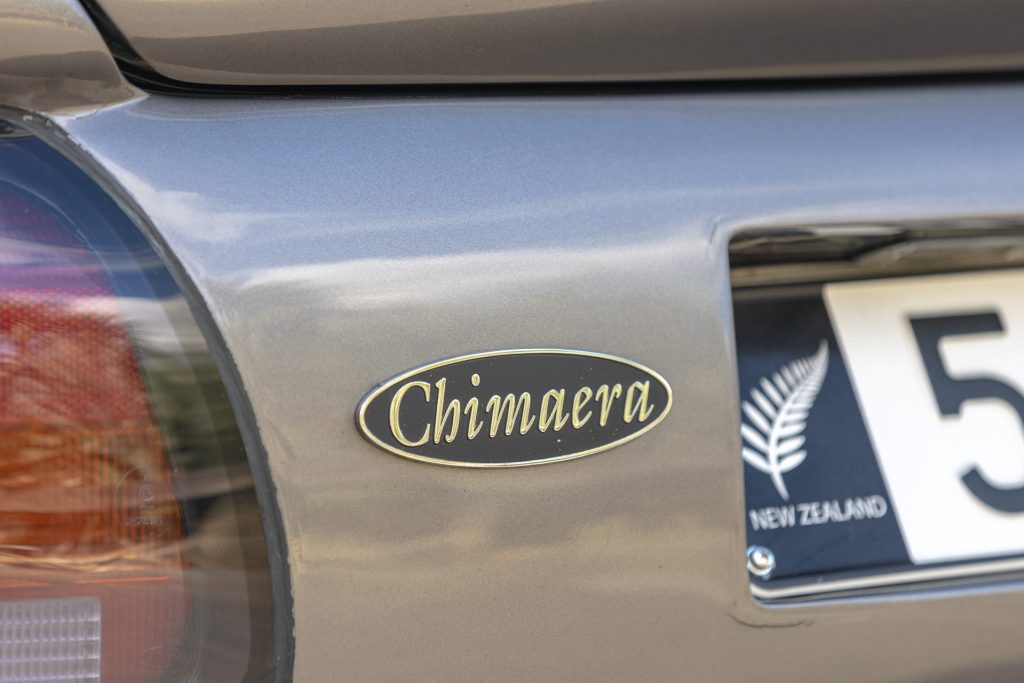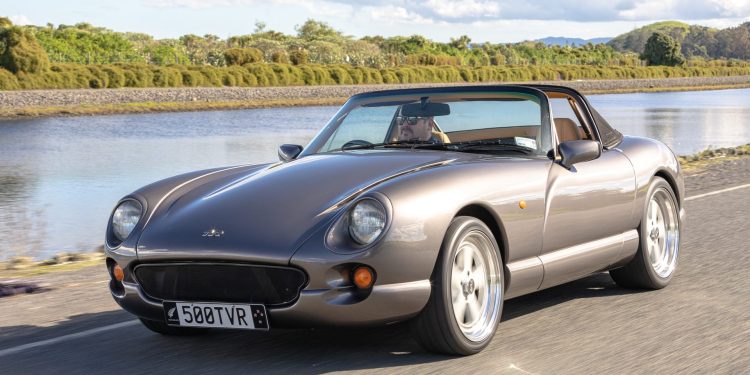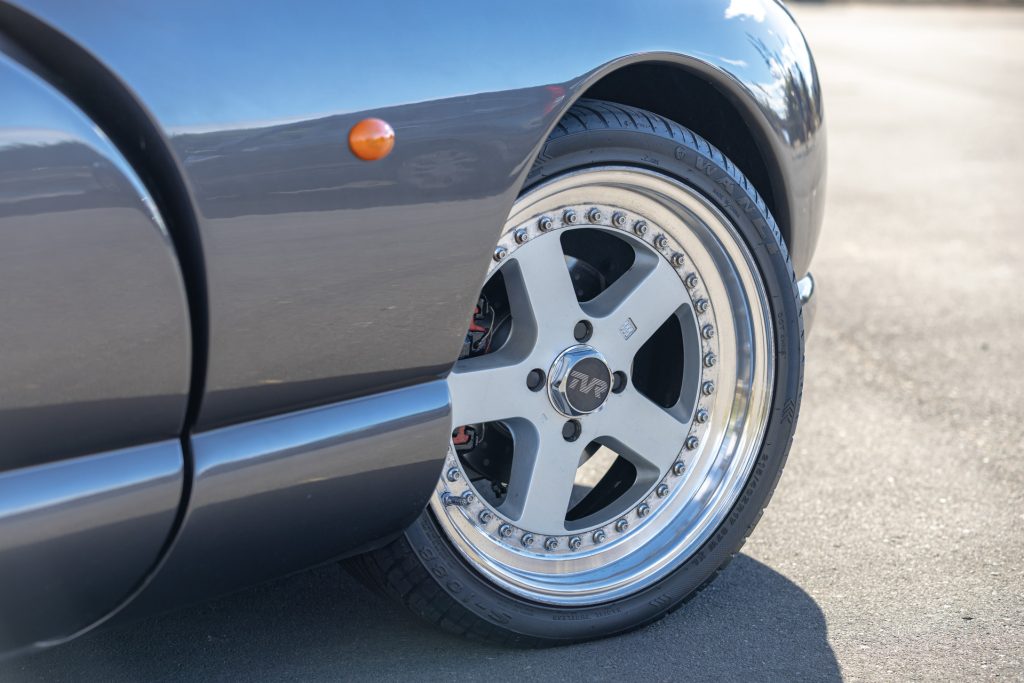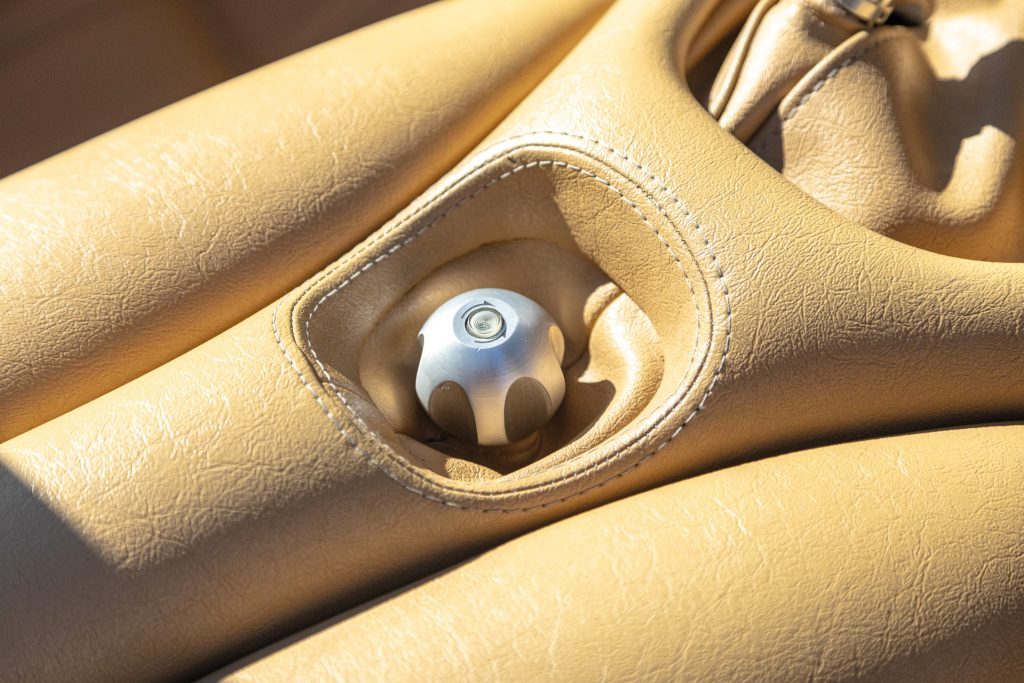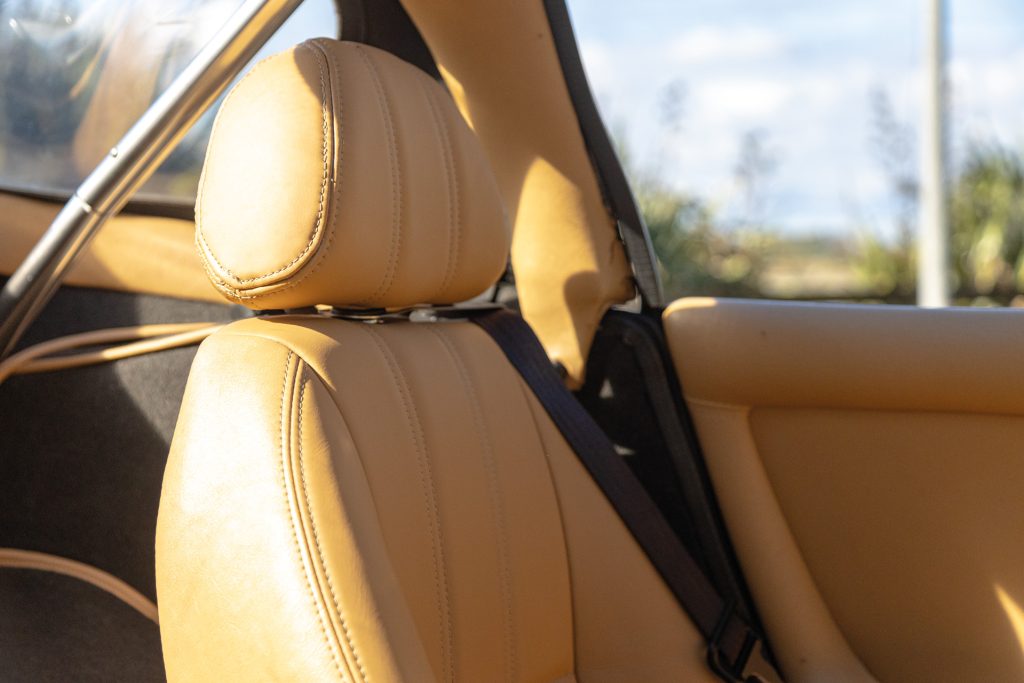1995 TVR Chimaera 500
Words: Kyle Cassidy | Photos: Alex Schultz
TVR mashes together a mix of parts to deliver a sportscar low in weight and heavy with power. The Chimaera, named after a mythical monster, is one of the more popular models here. We take a look at a nicely restored 5.0-litre version.
The British sportscar maker TVR is certainly one for the enthusiast. Founded in 1947 by Trevor Wilkinson in Blackpool, England, he built his first car in 1949 using a tubular chassis and a Ford engine. The first production model, the Grantura, featured a glass-reinforced plastic (GRP) body and debuted in 1958. TVRs were hand-built, front engine and rear drive with a strong focus on power-to-weight ratios, appealing to driving enthusiasts. And that remained true throughout the company’s many ups and downs.
Trevor left the company in 1962, and TVR went through several ownership changes before Arthur and Martin Lilley took over in 1965. They revitalised the brand with new models like the Vixen, Tuscan and M Series. In 1980, the Lilleys launched the angular Tasmin at the Geneva Motor Show, a bold design that nearly caused financial collapse. However, in 1981, Peter Wheeler, a chemical engineer and TVR enthusiast, acquired the company.
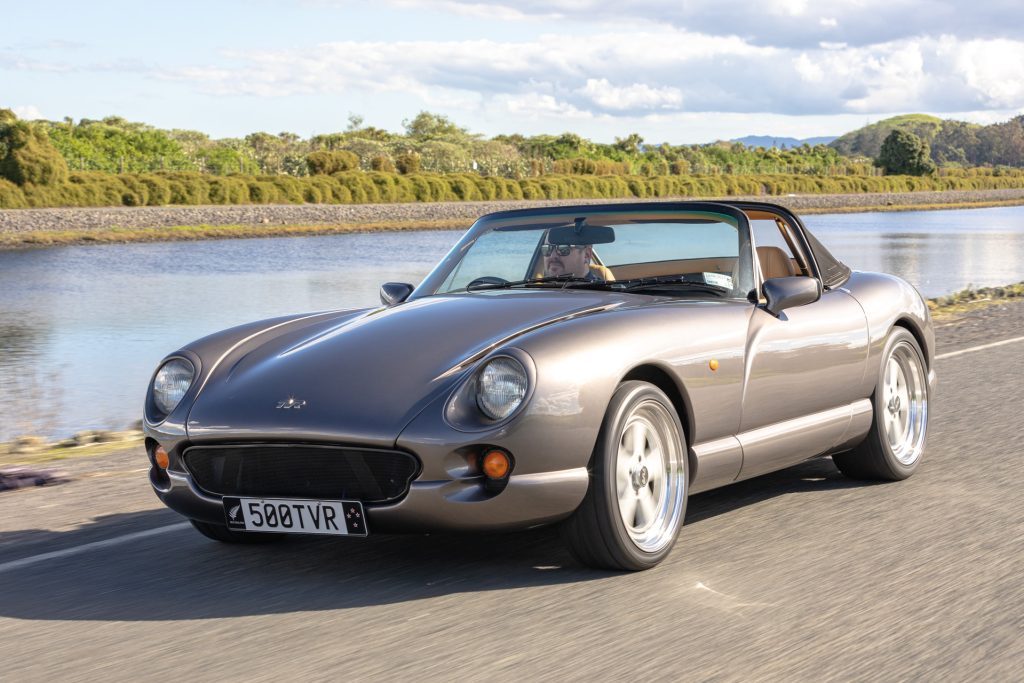
Under Wheeler’s 20-year leadership, TVR evolved significantly. Over the years, TVR had used engines from Coventry Climax, Ford and MG. However, the Rover V8, derived from a Buick/Oldsmobile design, became central to its cars from 1983 onward. Wheeler’s decision to fit a fuel-injected Rover V8 into the Tasmin chassis led to the successful 350i.
In 1989, TVR revealed the Speed Eight, which failed to gain wide popularity. However, the reintroduction of the Griffith name on a curvier prototype caught significant attention. With over 300 advance orders, production began in 1992. The Chimaera soon followed and quickly became TVR’s best-selling model. Together, the Griffith and Chimaera marked the peak of TVR’s popularity during the Wheeler era.
The Griffith, and thus the Chimarea, used a tubular steel backbone chassis, with double wishbone suspension at each corner. To keep costs in check, it used off-the-shelf components for the transmission, suspension and other bits while the body was fashioned from fibreglass.
The Chimaera debuted in 1993 on the chassis of the Griffith but was equipped with a more compliant suspension set-up with Bilstein dampers and a rear antiroll bar. It was initially offered with a 4.0- or 4.3-litre V8. While originally it had a Rover SD1 gearbox, this was replaced with a Borg-Warner T5 gearbox soon after, along with larger 4.5- and 5.0-litre engine options. The Chimaera weighed in around the 1000kg mark, with power outputs ranging from 240hp (178kW) for the 4.0-litre car to a more commanding 350hp (260kW) in 5.0 form, with a 430Nm of torque. That saw the 0-100km/h sprint covered off in a tick over four seconds and a top end of over 280km/h.
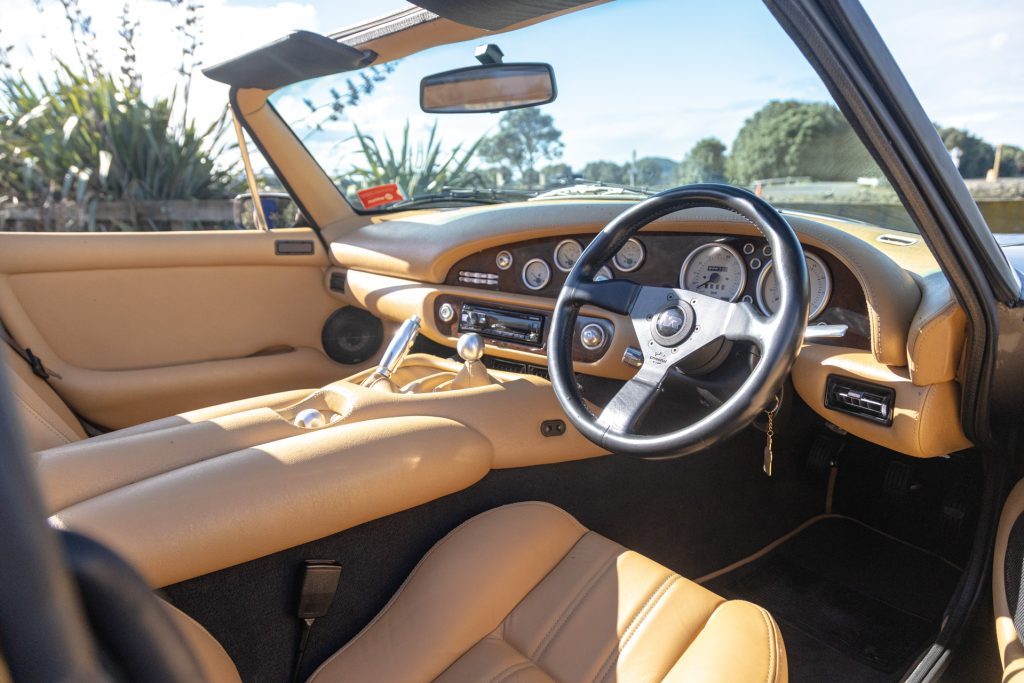
The Chimaera is also the most popular TVR model you’ll find in NZ. And the owner of this model, Aucklander Sam Early, is on to his second example.
“I had a Chimaera 400 eight years ago. It had just been through a big restoration. While driving it to a car meet, a drunk driver crashed into it and wrote it off. At the time, I thought, oh, well, that’s my TVR experience done and dusted.”
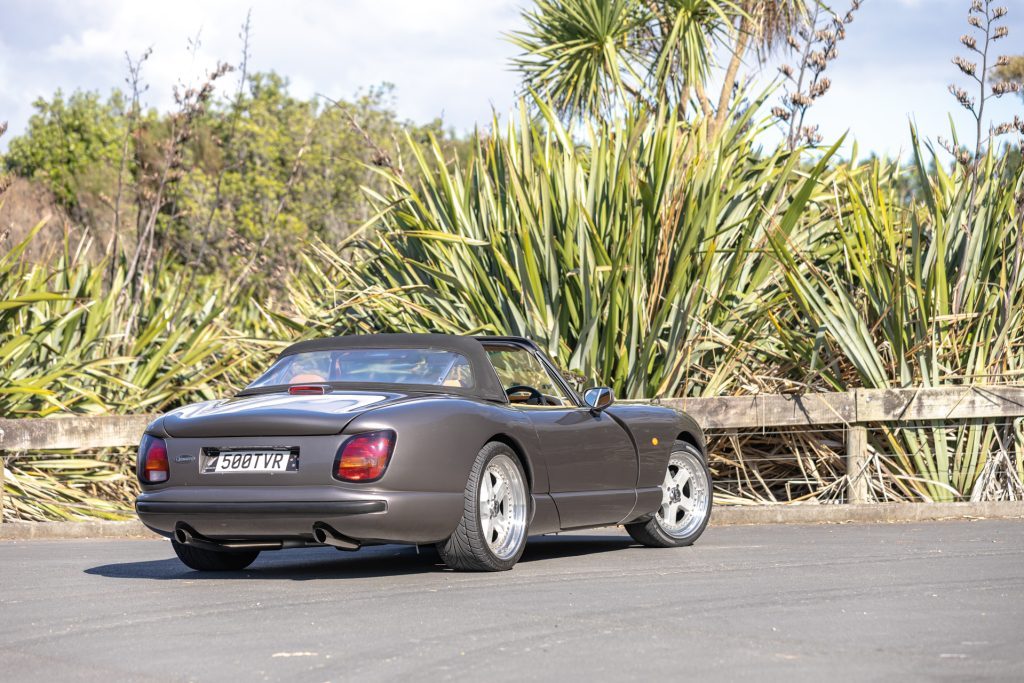
But a few months ago, he happened upon this 5.0-litre car. The previous custodian had owned it for over a decade. They had undertaken a thorough resto under the guidance of renowned TVR expert Jim Gamsby, who passed away a couple of years ago, and Sam took it over, the resto being 95 per cent complete.
“I’ve done the finishing details, a few mechanicals, finished off the stereo, tidied up some wiring and rubbers and trims. It has a different camshaft now, and the exhaust cats have been removed.” Along with uprated shocks and springs, the seats have been retrimmed and it’s had new carpet. Originally a Japanese import, it’s now in fine condition. “They are notorious for rust in the chassis outriggers. The body sits on top of the tubes and with the UK salting the roads in winter, it gets in there and you can’t wash it out. This one is immaculate underneath.”
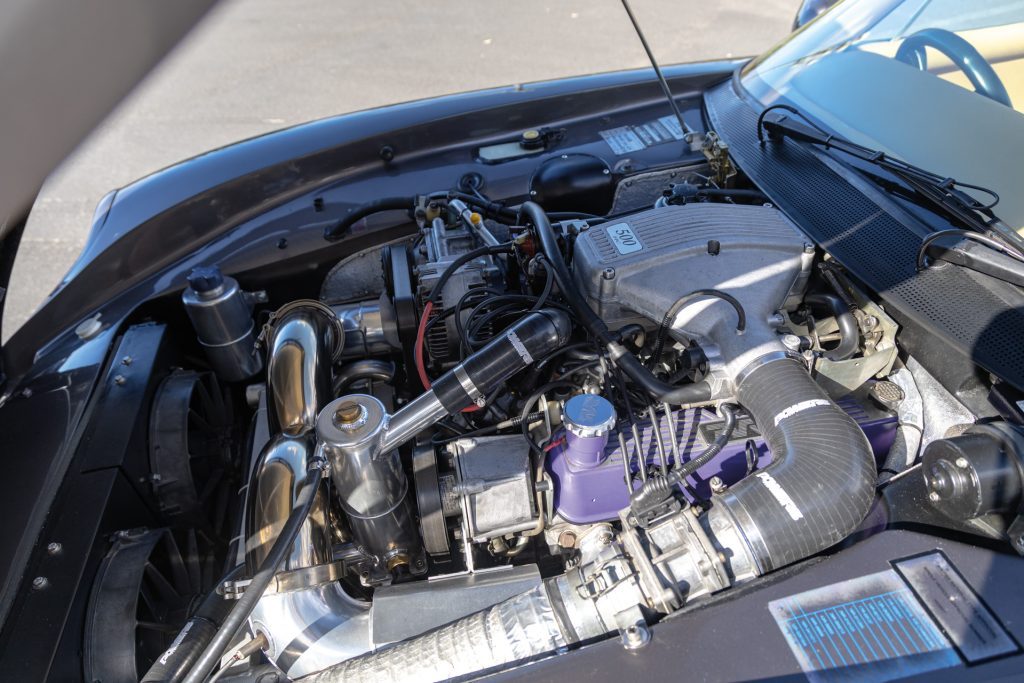
As with any low volume sportscar maker, especially those from Blightly, Sam says it pays to know your stuff when dabbling in TVR ownership. “You’ve got to be mechanically minded.
“My father and I have restored four or five cars now between us. We have a decent fleet of cars, the majority of them are British. I love the old Rover V8s.”
Sam says it’s beneficial if you can do some of the work yourself. “They are pretty basic and fairly easy to keep going. It’s got a distributor and a coil, so it’s not that hard. They are a parts-bin special too. This has Ford axles, hubs and brakes so parts are easy to come by.”
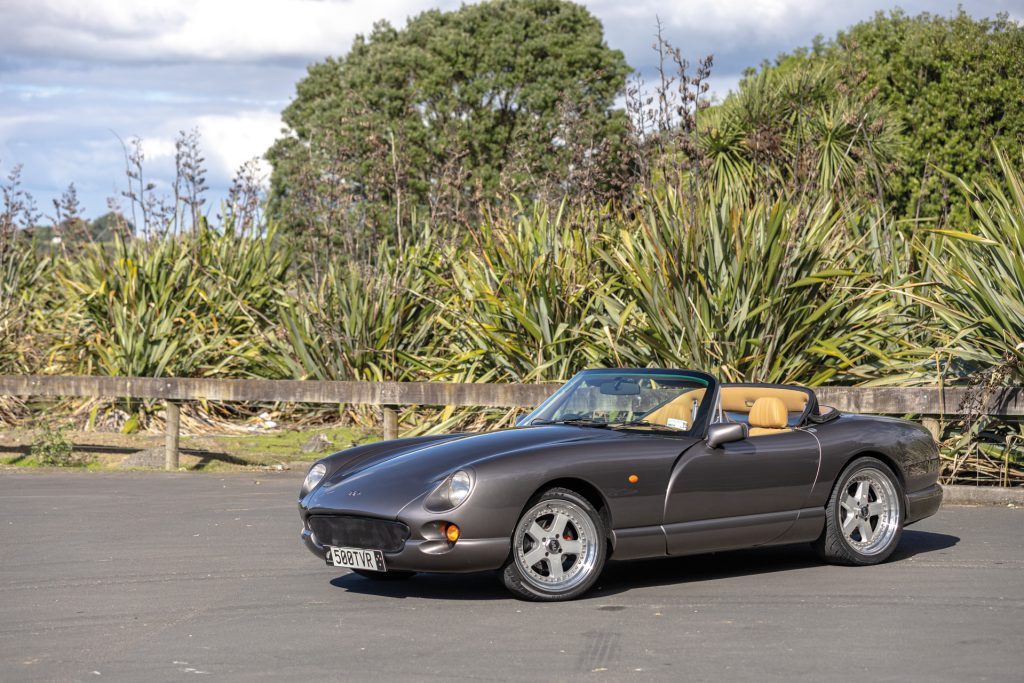
His connection with TVR goes back to his youth. “My old man had a Griffith 430 big valve when I was seven. I fondly remember him pulling up to the airport to pick me up in it and thinking it was the coolest thing ever.”
“The Griffiths were the hero car and they were pretty good looking for their time but personally I believe the Chimeara has aged better. I think the Griff is looking a bit like a kit car now. TVR people would shoot me for saying that.”
The appeal for him is in its uniqueness. “It’s just something different. I had an immaculate 997 C2S manual, but it was very clinical and boring at road legal speeds. It was just no fun on a road trip.”
“So I sold that car and was looking for something unique. You know, for around the 50 grand mark, what else can you buy that’s as interesting? It’s got a heap of character, it sounds good, looks great and handles well.”
He likes the power of the 500 too. “The 400 was a lot tamer. This 500 fries the tyres in first, second and third gear. It’s a driver’s car through and through. You’re sitting low, they communicate well and you get a lot of enjoyment out of them. There’s no ABS, no traction control, nothing to spoil the fun.”
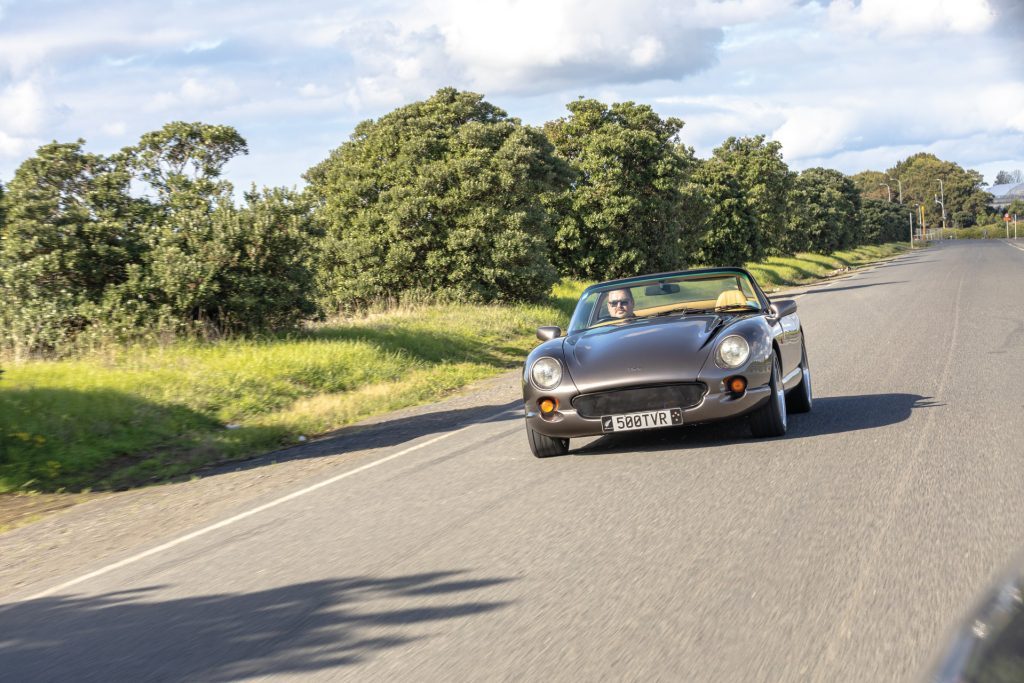
The 500s are also better specified cars than the 400s. “The 400 had vinyl seats for instance, and didn’t have power steering. This one’s got heated seats and power steering.”
On the market today, a reasonably tidy 400 can be had for around the $35k-$40k mark, though Sam says the sorted ones command a bit more.
“I expect market value for this to be around the $60k mark. I think that’s a lot of fun for what it is and what it owes me. I had twice as much tied up in my 997 and half the enjoyment.”
